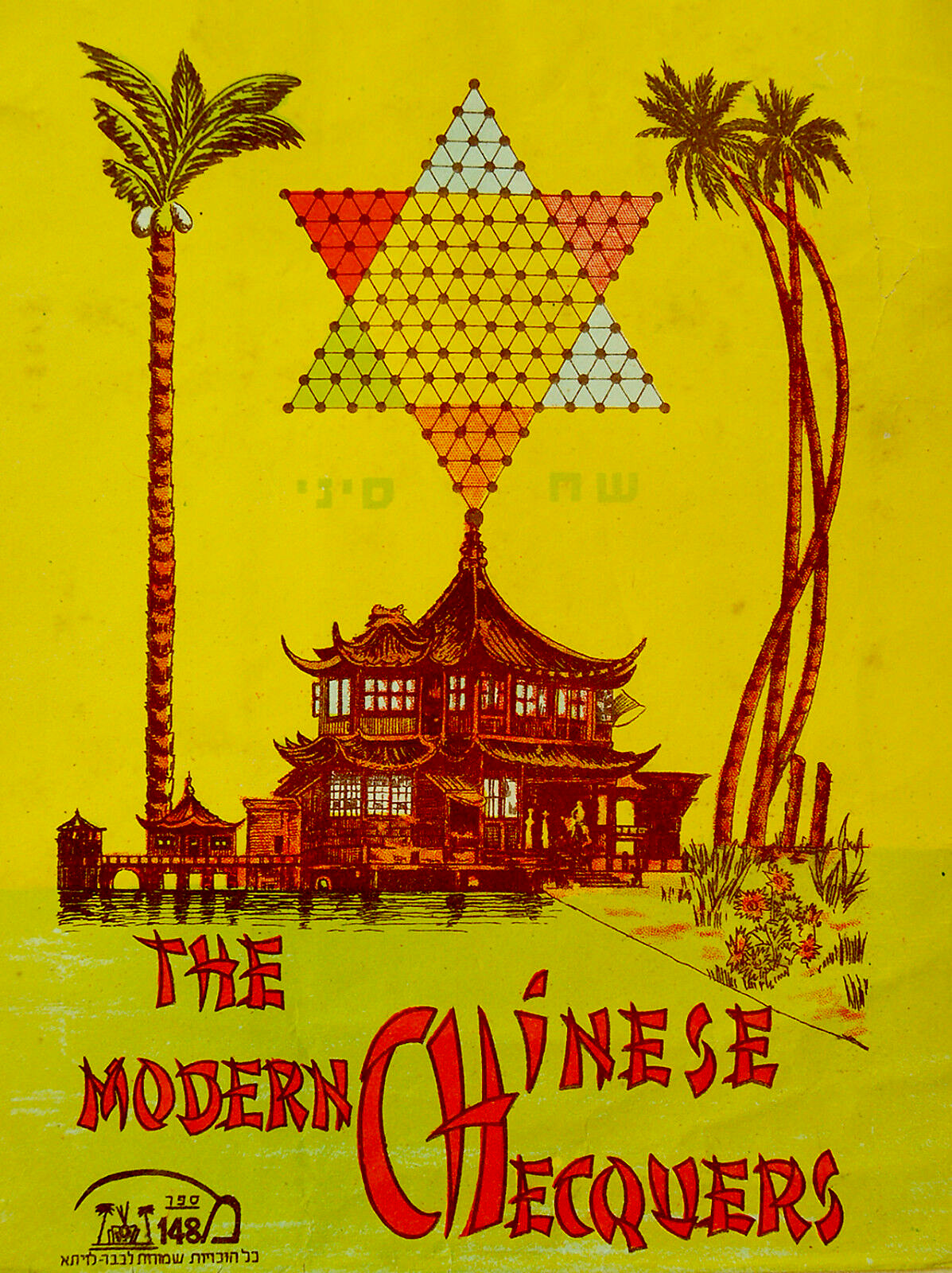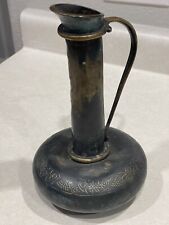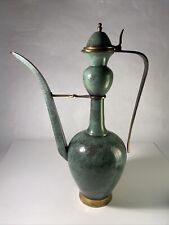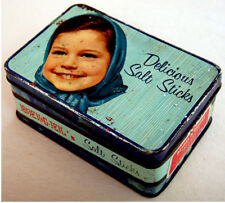1950 Israel BARLEVI Board GAME Litho CHINESE CHECKERS Hebrew DRAUGHTS Chequers For Sale

When you click on links to various merchants on this site and make a purchase, this can result in this site earning a commission. Affiliate programs and affiliations include, but are not limited to, the eBay Partner Network.
1950 Israel BARLEVI Board GAME Litho CHINESE CHECKERS Hebrew DRAUGHTS Chequers:
$105.00
DESCRIPTION : Here for saleis an EXTREMELY RARE illustrated genuine \"BARLEVI\" ( Barlevy ) BOARD GAME. It\'s a complete , Still unused and in itsORIGINAL wraping COMPLETE BOARD GAME by the name of “The Modern CHINESECHECKERS” ( Also spelled as CHECQUERS ) or in Hebrew “Sin Hai – A Chinese Game”. The BOARD GAME is wrapped as originaly issued in a nylon bag , Sealed bycardboard handle with the BARLEVI LOGO and the TAX LABEL of that period. TheBOARD GAME consists of 10x10” lithographic cardboard board . Full Hebrewinstructions. One illustrated lithographic cover sheet and 60 colorful , Nicelydesigned pawns . An illustrated BEAUTY , With the MOST VIVID COLORS which theSTONE LITHOGRAPHIC PRINTING can provide , The BOARD GAME is named \"CHINESECHECKERS\" which is written in Hebrew and English. \"BARLEVI\" catNo. 148 . BARLEVI\'s LOGO is printed on the game ). The DESIGNER - CREATORof this BOARD GAME was the legendary ARIEH BARLEVI , The main manufactor ofGAMES : Board games and CARD GAMES in Eretz Israel - Palestine and later on inIsrael state - This BOARD GAME was numbered \"148\" . The PRINTER of the STONE LITHOGRAPH isunknown ,Propablyin Tel Aviv. Acolorful STONE LITHOGRAPHICPrinting. Very good condition. The board game is COMPLETE and UNUSED , Itwas taken from its bag only for the purpose of detailed scanning. ( Plslook at scan for accurate AS IS images ) .Will be sent in a special protectiverigid sealedpackage .
AUTHENTICITY :ThisILLUSTRATED LITHOGRAPHIC BOARD GAMEis fullyguaranteedORIGINAL fromthe 1950’s – 1960’s. A Barlevi\'s BOARD GAME , Itis NOT a reproduction or a recently made reprint or an immitation,Itholds alife long GUARANTEE for itsAUTHENTICITY andORIGINALITY.
PAYMENTS : Paymentmethod accepted : Paypal& All credit cards.
SHIPPING : Shipp worldwide viaregisteredairmail is $ 29 ( Domestic $12 only with buy it now).ITEM will be sent in a specialprotective rigid sealedpackage .Will be sent around 5-10 days after payment .
Chinese checkers (alternate spelling Chinese chequers) is a strategy board game which can be played by two, three, four, or six people, playing individually or with partners The game is a modern and simplified variation of the game Halma.The objective is to be first to race one\'s pieces across the hexagram-shaped gameboard into \"home\"—the corner of the star opposite one\'s starting corner—using single-step moves or moves which jump over other pieces. The others continue playing to establish 2nd, 3rd, 4th, 5th, and last place finishers. Like other skill-based games, Chinese checkers involves strategy. The rules are simple, however, so even young children can play.Despite its name, the game is not a variation of checkers, nor did it originate in China or any part of Asia (on the other hand, the game known as \"Chinese chess\", or xiangqi, is from China). The game was invented in Germany in 1892 under the name \"Stern-Halma\" as a variation of the older American game Halma.The \"Stern\" (German for star) refers to the board\'s star shape (in contrast to the square board used in Halma). The name \"Chinese Checkers\" originated in the United States as a marketing scheme by Bill and Jack Pressman in 1928. The Pressman company\'s game was originally called \"Hop Ching Checkers\".The game was introduced to Chinese-speaking regions mostly by the Japanese.A single move can consist of multiple hops; each piece hopped must be directly adjacent, and hops can be in any direction.The aim is to race all one\'s pieces into the star corner on the opposite side of the board before opponents do the same. The destination corner is called home. Each player has ten pieces, except in games between two players when 15 are sometimes used. (On bigger star boards, 15 or 21 pieces are used.)In \"hop across\", the most popular variation, each player starts with their colored pieces on one of the six points or corners of the star and attempts to race them all home into the opposite corner. Players take turns moving a single piece, either by moving one step in any direction to an adjacent empty space, or by jumping in one or any number of available consecutive hops over other single pieces. A player may not combine hopping with a single-step move – a move consists of one or the other. There is no capturing in Chinese checkers, so hopped pieces remain active and in play. Move turns proceed clockwise around the boardIn the diagram, Green might move the topmost piece one space diagonally forward as shown. A hop consists of jumping over a single adjacent piece, either one\'s own or an opponent\'s, to the empty space directly beyond it in the same line of direction. Red might advance the indicated piece by a chain of three hops in a single move. It is not mandatory to make the most number of hops possible. (In some instances a player may choose to stop the jumping sequence part way in order to impede the opponent\'s progress, or to align pieces for planned future moves.)StrategyA basic strategy is to create or find the longest hopping path that leads closest to home, or immediately into it. (Multiple-jump moves are obviously faster to advance pieces than step-by-step moves.) Since either player can make use of any hopping \'ladder\' or \'chain\' created, a more advanced strategy involves hindering an opposing player in addition to helping oneself make jumps across the board. Of equal importance are the players\' strategies for emptying and filling their starting and home corners. Games between top players are rarely decided by more than a couple of moves.Differing numbers of players result in different starting layouts, in turn imposing different best-game strategies. For example, if a player\'s home destination corner starts empty (i.e. is not an opponent\'s starting corner), the player can freely build a \'ladder\' or \'bridge\' with their pieces between the two opposite ends. But if a player\'s opponent occupies the home corner, the player may need to wait for opponent pieces to clear before filling the home vacancies.Starting layoutsSix playersCan be played \"all versus all\", or three teams of two. When playing teams, teammates usually sit at opposite corners of the star, with each team member controlling their own colored set of pieces. The first team to advance both sets to their home destination corners is the winner. The remaining players usually continue play to determine second and third place finishers, etc.Four playersThe four-player game is the same as the game for six players, except that two opposite corners will be unused.Three playersIn a three-player game, all players control either one or two sets of pieces each. If one set is used, pieces race across the board into empty, opposite corners. If two sets are used, each player controls two differently colored sets of pieces at opposite corners of the star.Two playersIn a two-player game, each player plays one, two, or three sets of pieces. If one set is played, the pieces usually go into the opponent\'s starting corner, and the number of pieces per side is often increased to 15 (instead of the usual 10). If two sets are played, the pieces can either go into the opponent\'s starting corners, or one of the players\' two sets can go into an opposite empty corner. If three sets are played, the pieces usually go into the opponent\'s starting corners. Draughts (British English) or checkers (American English) is a group of strategy board games for two players which involve diagonal moves of uniform game pieces and mandatory captures by jumping over opponent pieces. Draughts developed from alquerque. The name derives from the verb to draw or to move. The most popular forms are international draughts, played on a 10×10 board, and English draughts, also called American checkers, played on an 8×8 checkerboard, but there are many other variants including some played on a 12×12 board. 1960

Related Items:
VTG.Mid-Century 1950`s "PAL BELL" Bronze Urn-Vase-Israel-Judaica
$295.99
Pal-Bell Hebron Pitcher Maurice Ascalon circa 1950 bronze/chemical patina Israel
$375.00
1950 Israel KOSHER BISQUIT Litho TIN BOX Jewish GIRL Hebrew SALTED STICK Judaica
$115.00



